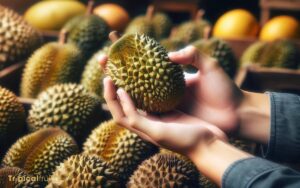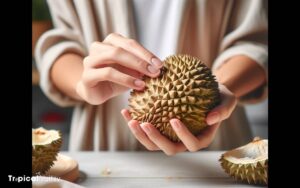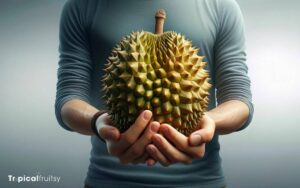Monthong Durian Vs Musang King: Which is Best!
Monthong and Musang King durians are two of the most sought-after varieties, known for their distinct characteristics.
Monthong durians, originating from Thailand, are famous for their large size and milder scent, making them a favorite among those who prefer a less pungent durian variety.
Musang King durians, on the other hand, are native to Malaysia and are highly prized for their robust flavor and creamy, buttery texture, which often results in a premium price point.
The key differences between Monthong and Musang King durians can be summarized as follows:
Explore the exotic tastes of Monthong and Musang King durians, each offering a unique indulgence for the palate.

Key Takeaway
Durian Delicacies Compared: Monthong vs Musang King
| Feature | Monthong Durian | Musang King Durian |
|---|---|---|
| Origin | Thailand | Malaysia |
| Aroma | Milder and less pungent | Strong and distinctive |
| Flavor | Sweet and somewhat milder | Intensely sweet and complex |
| Texture | Large and firm, meaty | Creamy, buttery, and smooth |
| Size | Larger fruits | Smaller compared to Monthong |
| Seed Size | Larger seeds | Smaller seeds |
| Price | Generally more affordable | Higher price, considered premium |
| Popularity | Popular in Thailand and China | Highly sought after in Malaysia |
| Availability | Widely available during the season | Can be more scarce and in demand |
| Nutritional Content | Rich in carbohydrates and vitamins | High in sugar, vitamins, and fats |
| Preferred Consumption | Fresh, in desserts, or frozen | Often eaten fresh to savor flavor |
Origins of Monthong Durian
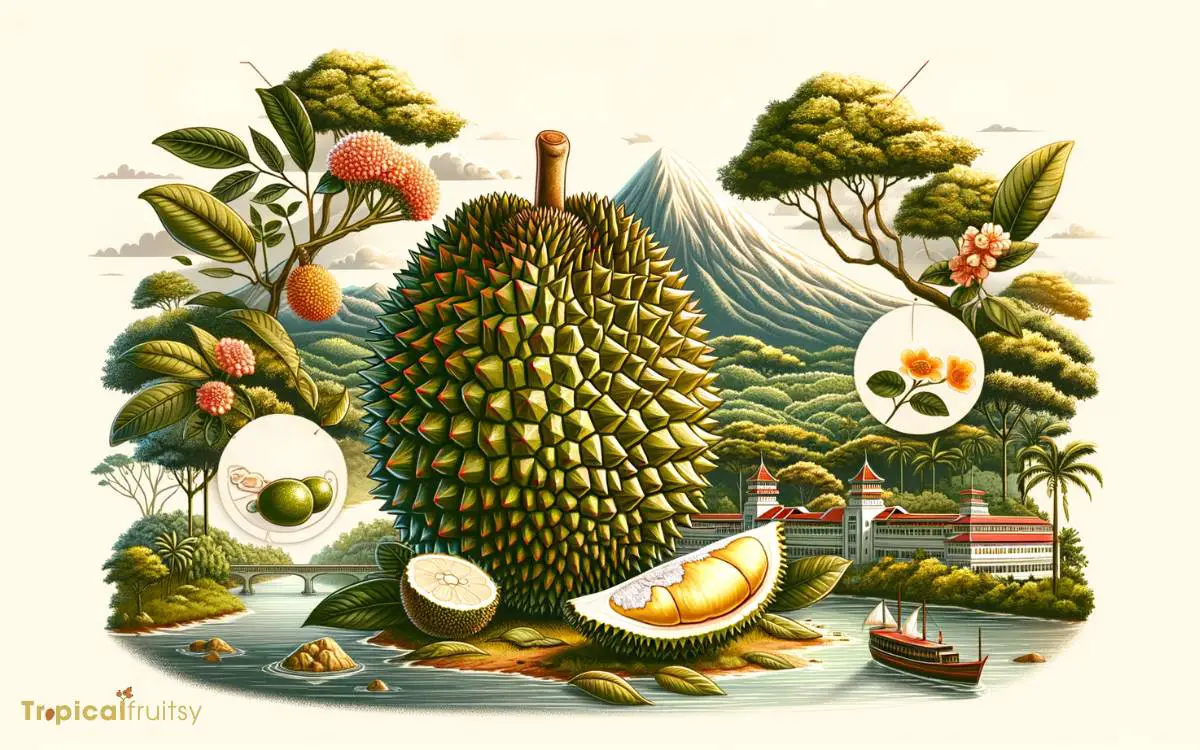
One finds the origins of the Monthong Durian in the lush orchards of Thailand, where it is widely cultivated and revered as the ‘King of Fruits.’
This cultivar is distinguished by its large size, relatively mild aroma, and thick, creamy flesh that boasts a sweet, custardy flavor with minimal bitterness.
Agricultural practices have been refined over generations to optimize the quality and yield of Monthong Durian, which now constitutes a significant portion of Thailand’s fruit export industry.
Through meticulous cultivation, the Monthong variety has become synonymous with the Thai durian market, offering a consistent product that appeals to both domestic and international consumers.
Discovering Musang King
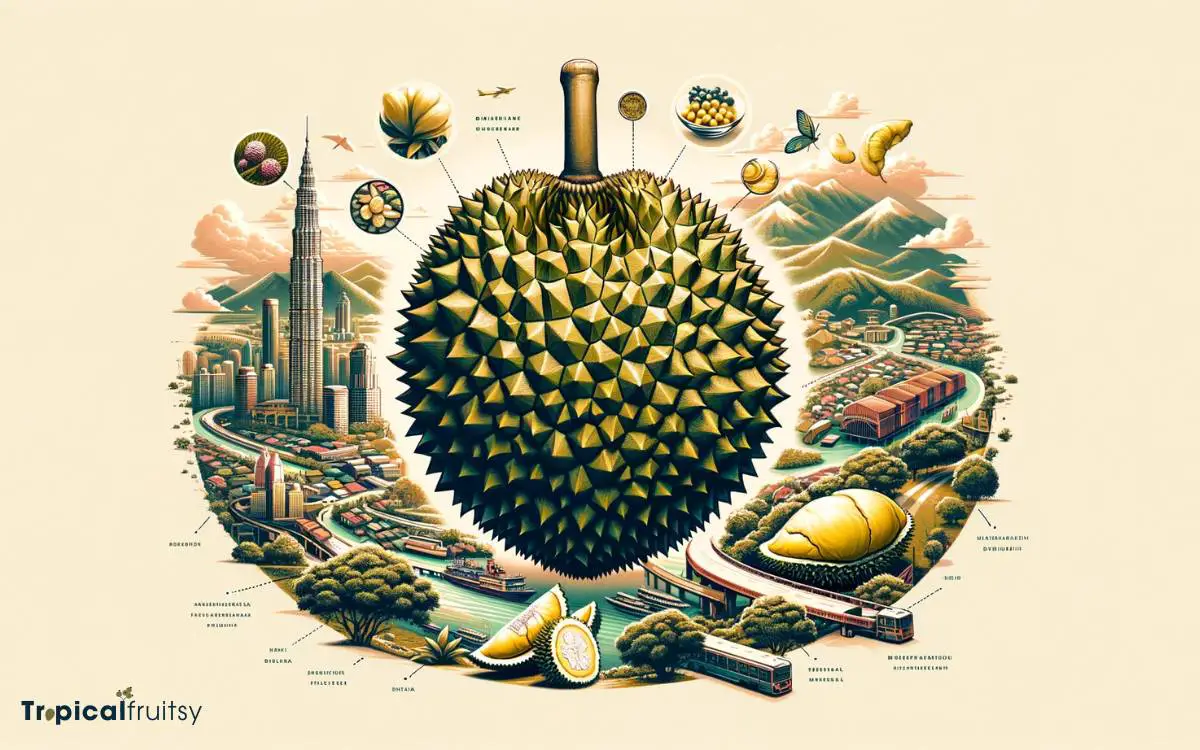
Where does the Musang King Durian, often hailed as the pinnacle of durian varieties, originate, and what sets it apart in the competitive durian market?
The Musang King, or Durio zibethinus ‘Musang King’, is predominantly cultivated in Malaysia, a country renowned for its exceptional durian production.
This particular cultivar is lauded for its vibrant golden-yellow flesh, which is characterized by its creamy texture and a complex flavor profile that expertly balances sweetness with a hint of bitterness.
The allure of the Musang King lies in its consistently high-quality fruit, which commands a premium price in both local and international markets.
Its signature trait, the deep star-shaped seam at the bottom of the fruit, serves as a visual hallmark for identification, allowing connoisseurs and casual consumers alike to distinguish this elite variety with confidence.
Aromas and Flavors Compared
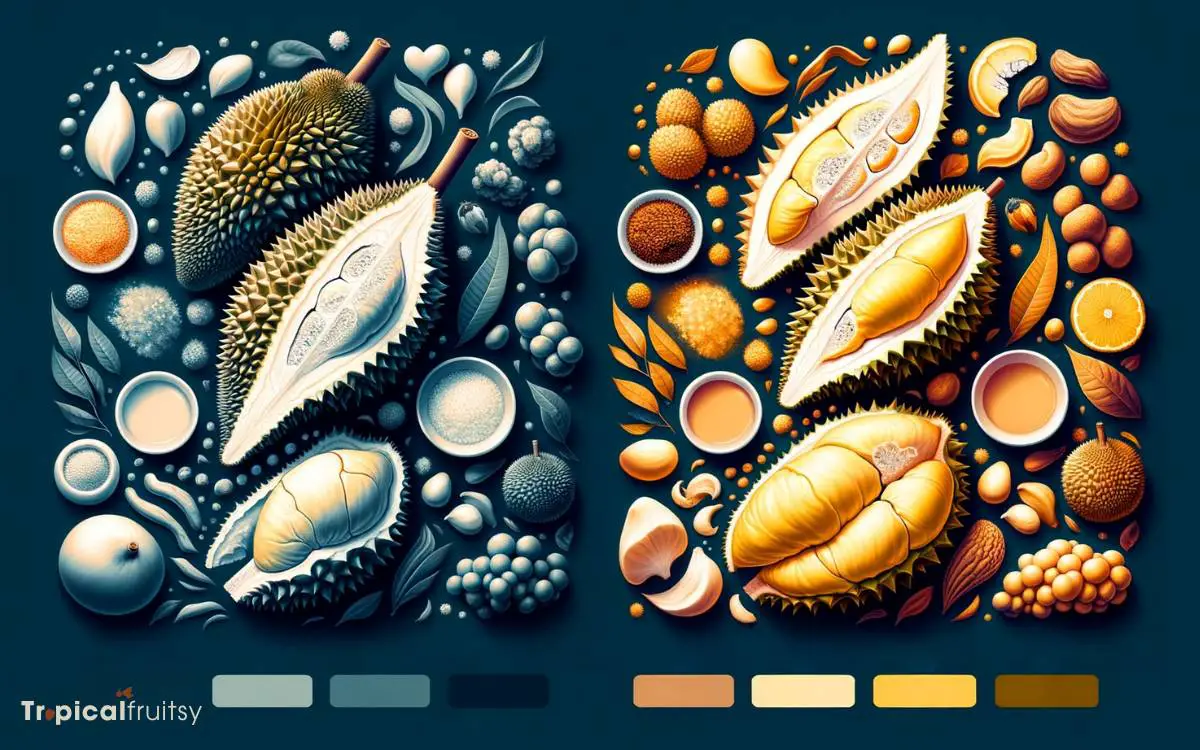
In comparing the aromas and flavors of Monthong and Musang King durians, the latter is distinguished by its potent and unique scent paired with a rich, complex taste profile.
Musang King’s aroma is renowned for its intensity, often described as a mix of savory, sweet, and creamy notes with a hint of alcoholic fermentation that can be polarizing for some.
The flavor is equally multifaceted, presenting a custard-like consistency, a blend of sweet and bitter tones, and a lingering aftertaste that connoisseurs cherish.
On the other hand, Monthong durian emits a milder fragrance, less offensive to the uninitiated, and offers a lighter, somewhat sweeter taste with a creamy, buttery texture that is more widely palatable but less nuanced than its Musang King counterpart.
Texture and Flesh Quality
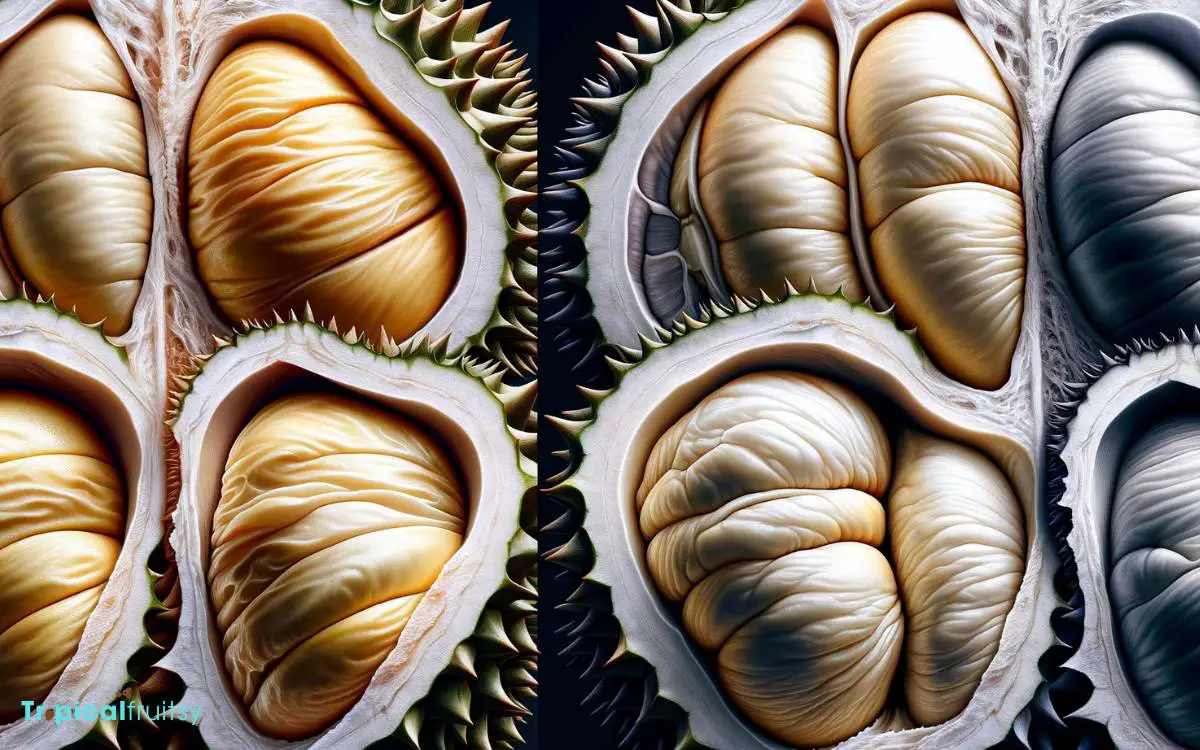
The texture of Monthong durian is characterized by its substantial creaminess, while Musang King boasts a smoother, more velvety flesh quality that distinguishes it as a premium variety.
Connoisseurs often look to the tactile experience of the durian flesh as a critical indicator of quality.
Monthong’s texture is dense yet supple, yielding to pressure with a custard-like consistency that is both satisfying and rich.
In contrast, Musang King presents an almost buttery texture, with a tender, melt-in-the-mouth quality highly sought after by aficionados.
This difference in texture is not merely a matter of preference but a result of each variety’s unique cellular composition and ripeness at harvest, reflecting the subtleties of durian cultivation and the expertise required to produce fruit of exceptional quality.
Nutritional Profiles Explored
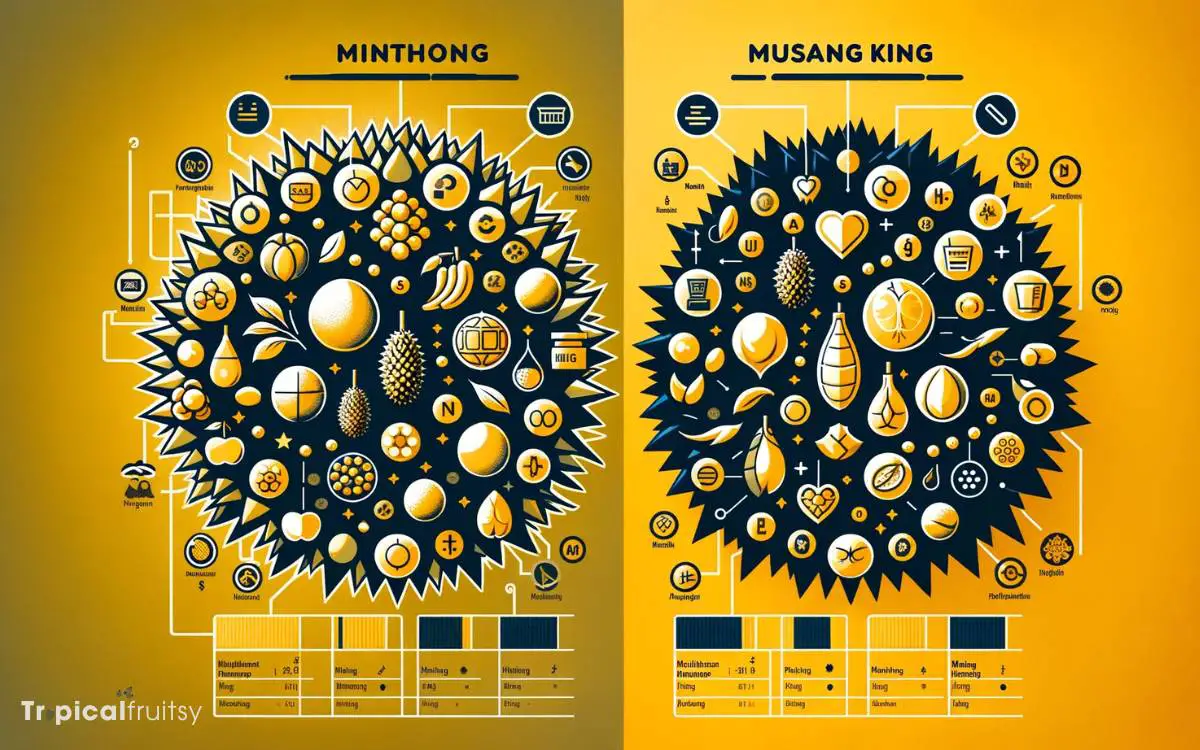
Both Monthong and Musang King durians not only differ in texture and taste but also offer distinct nutritional profiles that are significant for health-conscious consumers.
These tropical fruits are packed with vitamins, minerals, and dietary fiber, contributing to a range of health benefits.
An analytical examination of their nutritional content reveals key differences that may influence consumer preference based on dietary needs.
| Nutrient | Monthong (per 100g) | Musang King (per 100g) |
|---|---|---|
| Calories | 147 | 185 |
| Total Fat | 5 g | 13 g |
| Dietary Fiber | 3.8 g | 4.3 g |
| Sugars | 27 g | 33 g |
| Vitamin C | 33 mg | 19.7 mg |
Monthong, on the other hand, has less fat and a comparable fiber content, making it slightly more appealing for those on a lower-calorie diet.
Harvesting and Seasons

Durian aficionados anticipate the distinct harvesting seasons of Monthong and Musang King, which typically occur biannually in their respective regions.
Monthong durians, primarily cultivated in Thailand, generally bear fruit in the middle to the end of the calendar year, with a secondary, less abundant season in the middle of the year.
Conversely, the highly sought-after Musang King durians from Malaysia have their peak seasons from June to August and a secondary season from December to February.
These periods are keenly awaited by connoisseurs and the market alike, as they significantly influence availability, price, and freshness.
Understanding these cycles is crucial for stakeholders, from growers to exporters, to strategize supply chain management and meet the global demand for these premium fruits.
Price and Market Demand
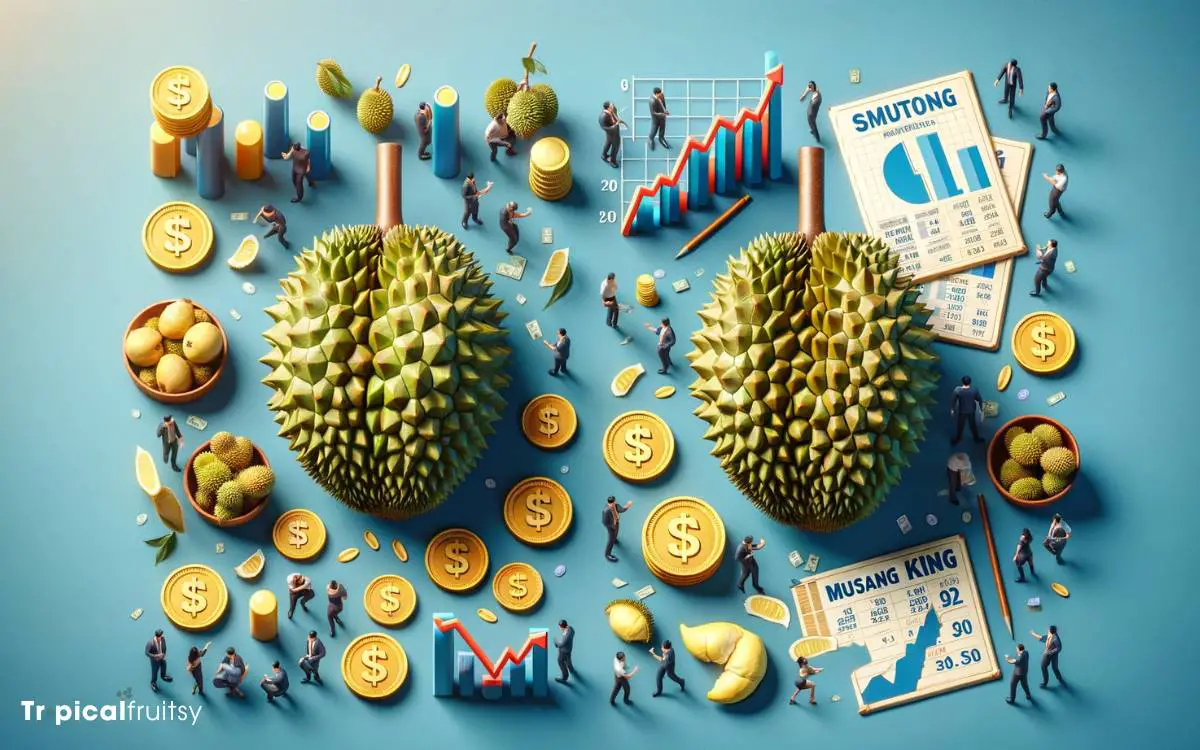
Market dynamics for Monthong and Musang King durians show a fluctuation in price and demand coinciding with their respective harvesting seasons.
For Musang King, the gold standard of durians, the price is significantly higher due to its coveted taste and limited availability. Its demand peaks during the harvest season, often resulting in a sharp price increase as consumers vie for a taste of its rich, creamy flesh.
Monthong, meanwhile, is more abundantly available and commands a lower price point, making it more accessible but less sought-after.
The export markets also impact these dynamics, with China’s burgeoning demand for premium durians like Musang King driving up prices and influencing market trends.
Consequently, the Musang King often commands a premium in both domestic and international markets.
Culinary Uses and Recipes
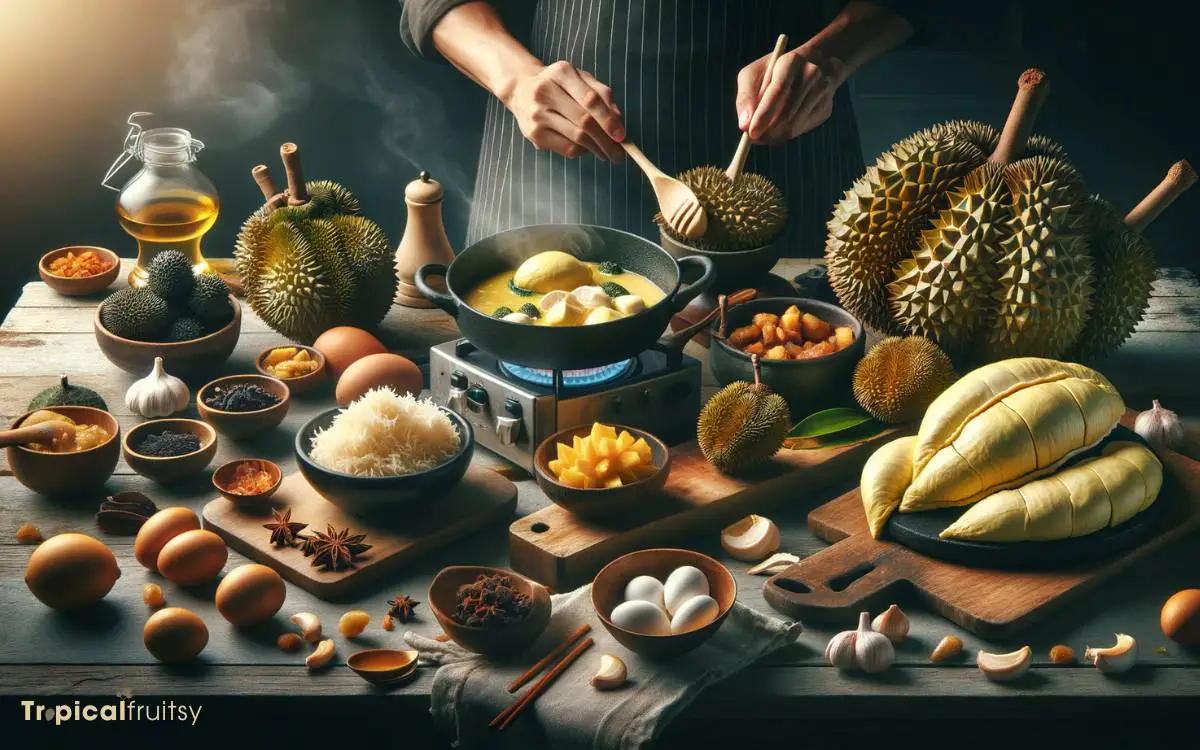
In the realm of culinary applications, Monthong and Musang King durians each offer unique flavor profiles that lend themselves to a variety of recipes, ranging from traditional Southeast Asian desserts to innovative Western gastronomy.
The Monthong, with its more subtle bitterness and custardy texture, is often preferred for durian-based pastries, ice creams, and confections where a delicate balance of flavors is desired.
Musang King, known for its pronounced sweetness and creamy, almost buttery consistency, is a coveted ingredient in premium durian desserts, such as mousses, cheesecakes, and even fine dining sauces that accompany savory dishes.
Chefs value these varieties for their ability to infuse depth and complexity into culinary creations, making the selection of the durian type a deliberate choice aligned with the desired gastronomic outcome.
Choosing the Right Durian
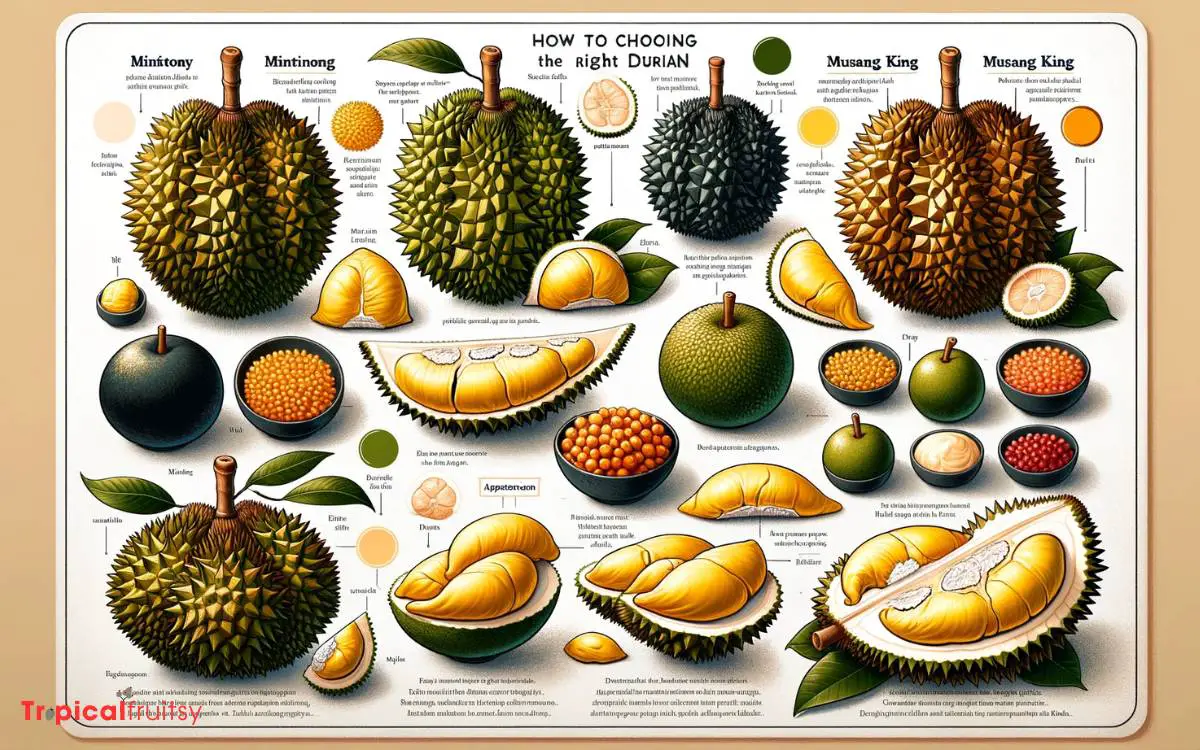
When selecting between Monthong and Musang King durians, one must consider both the desired flavor profile and the culinary application to ensure the choice enhances the gastronomic experience.
The Monthong variety, known for its milder taste and firmer texture, may be more suitable for those seeking a less intense durian experience or for dishes where a more subtle durian flavor is preferred.
On the other hand, the Musang King, with its potent aroma and creamy, custard-like consistency, is often the choice for durian aficionados and lends itself well to rich desserts and purees.
Analyzing the nuances of each variety’s taste, texture, and aroma is crucial for an informed selection, as it directly impacts the enjoyment and outcome of durian-infused culinary creations.
Kanyao Durian Vs Musang King
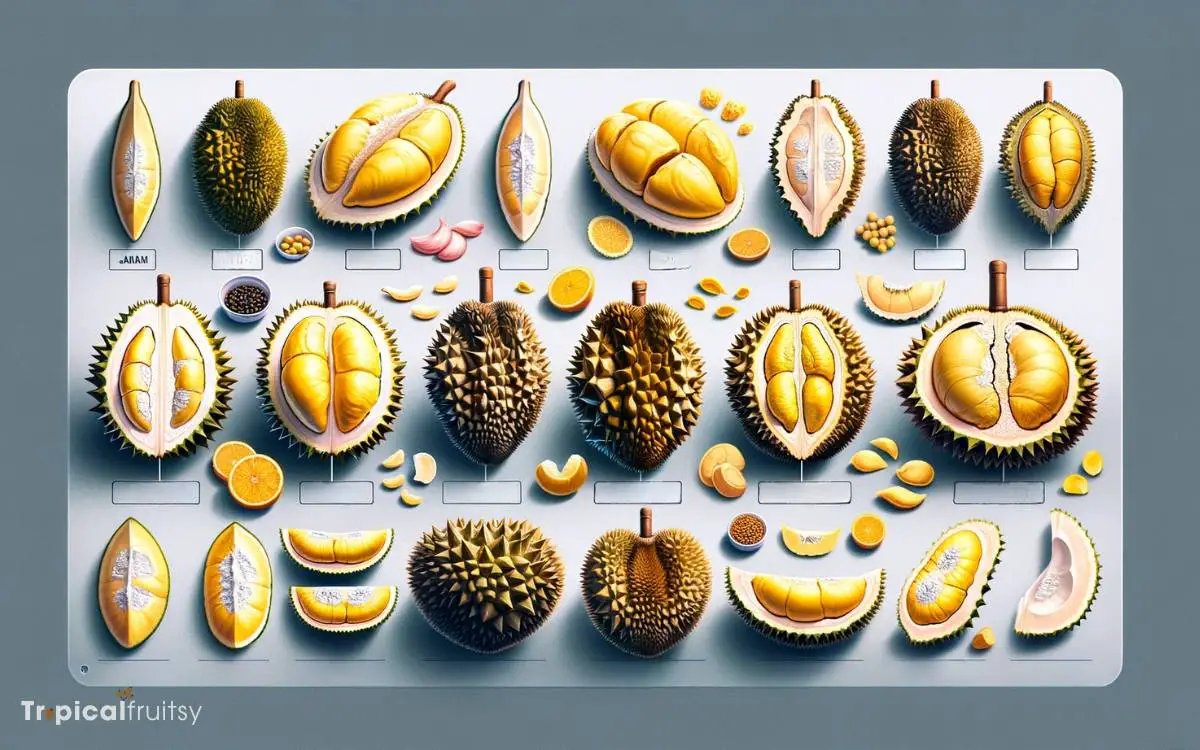
Kanyao Durian and Musang King are both varieties of durian, which is often considered the “king of fruits” in Southeast Asia.
However, they have some differences in terms of taste, texture, and appearance:
Kanyao Durian:
- Kanyao durian is a variety of durian that is known for its creamy texture and rich flavor.
- It has a distinctively sweet taste with hints of bitterness, and some aficionados describe it as having a complex flavor profile with notes of caramel and almond.
- Kanyao durian is prized for its smooth and creamy flesh, which is often pale yellow in color.
- The aroma of Kanyao durian is typically less pungent compared to other varieties, making it more appealing to some people who are sensitive to the strong smell of durian.
Musang King:
- Musang King, also known as Mao Shan Wang, is one of the most sought-after varieties of durian.
- It is characterized by its thick, creamy flesh and intense flavor profile.
- Musang King durian has a strong and distinctive taste that is both sweet and slightly bitter, with hints of caramel and roasted almonds.
- The flesh of Musang King durian is usually bright yellow in color and has a firmer texture compared to other varieties.
- Musang King durian is famous for its powerful aroma, which can be overwhelming for some but highly prized by durian enthusiasts.
In summary, while both Kanyao Durian and Musang King are premium varieties of durian, they have differences in taste, texture, and aroma.
Kanyao durian is known for its creamy texture and sweet flavor with less pungent aroma, while Musang King is famous for its intense flavor, firm texture, and strong aroma.
Ultimately, the preference between the two varieties depends on individual taste preferences.
Conclusion
The Monthong and Musang King durians, each with distinctive characteristics, have secured their places in the culinary world.
Musang King, often deemed the king of durians, commands up to 50% higher market prices due to its intense flavor and creamy texture, reflecting its popularity and demand.
Despite this, Monthong maintains a significant market share, favored for its milder taste and larger size.
Both varieties contribute to the diversity and richness of durian gastronomy.

